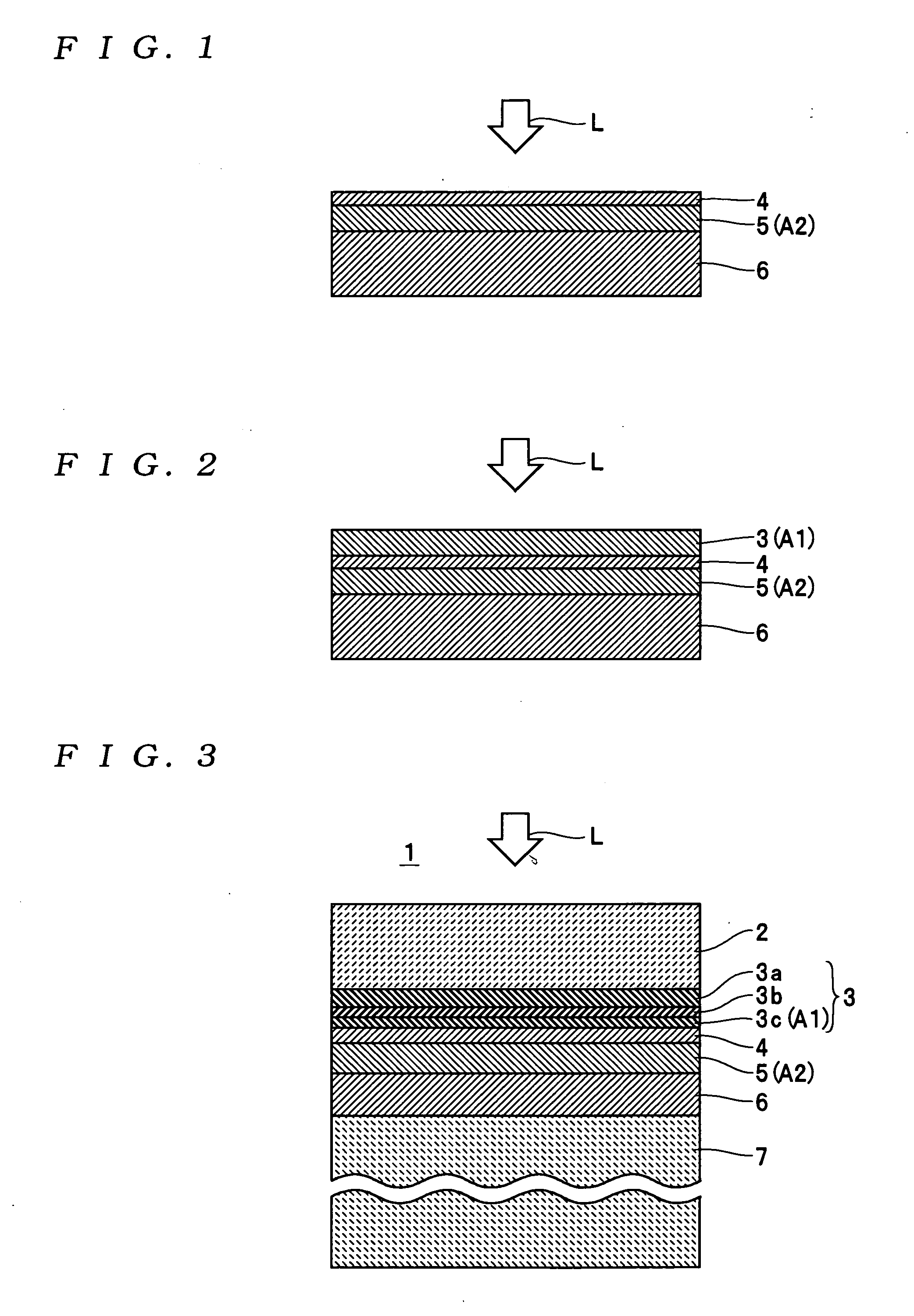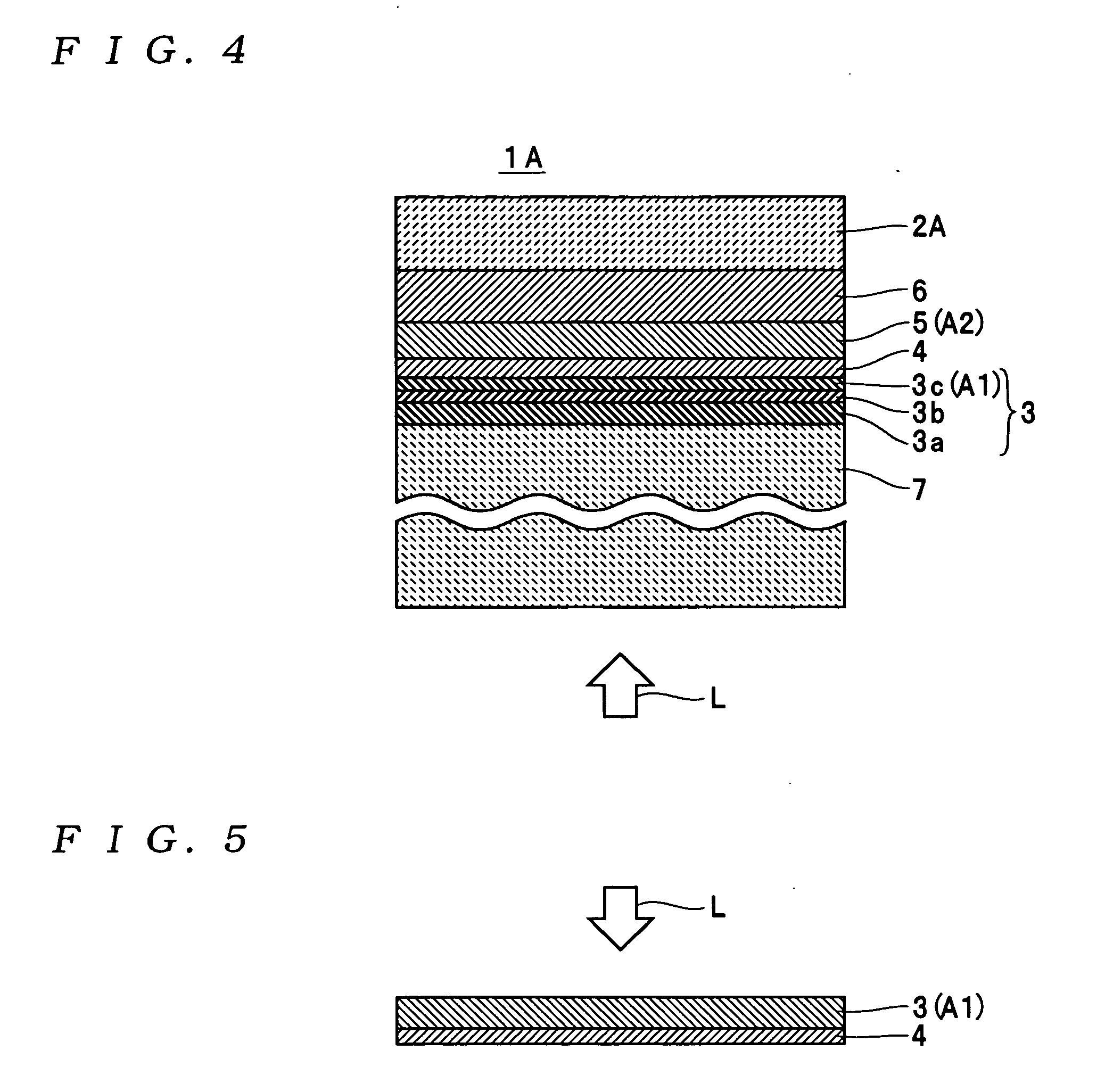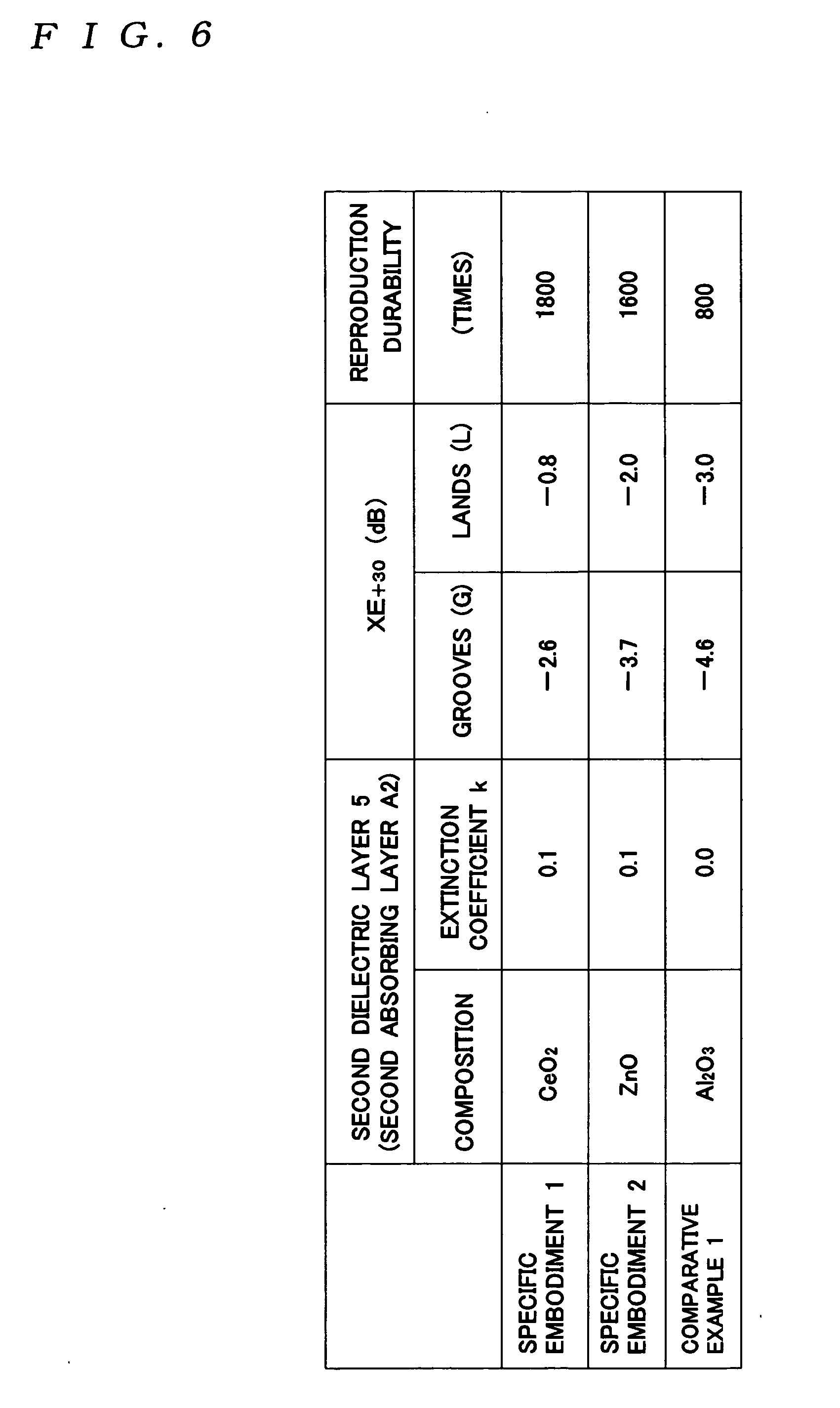[0037] In this case, as described for specific embodiments given later, although the effect of the present invention can be realized by providing absorbing
layers A made of ZnO (whose
extinction coefficient k=0.1), the effect of the invention is not realized when a ZnO target is used and reactive
sputtering is conducted in an
atmosphere including
oxygen gas to form the absorbing
layers A (whose extinction coefficient k=0). That is, even if the composite elements of the absorbing
layers A are the same, by varying the ratio of the composite elements, a small variation is caused in the extinction coefficient k from 0.1 to 0, which prevents the effect of the invention from being realized. Accordingly, to stably realize the effect of the invention, it is necessary to strictly control the formation of the absorbing layers A so that the intended value is achieved for the extinction coefficient k. More specifically, when the absorbing layers A are formed by
sputtering, for example, the extinction coefficient k is controlled via the target composition, the flow of the
reactive gas during reactive
sputtering, and the like.
[0038] To sufficiently achieve the effect of the invention, it is also preferable to form the absorbing layers A so as to tightly adhere to the recording layer 4. However, it is possible to provide other layers (such as
dielectric layers aside from the first
dielectric layer 3 and the second
dielectric layer 5) between the recording layer 4 and the absorbing layers A. However, when the layers formed between the recording layer 4 and the absorbing layers A are too thick, there is the risk of the effect of the invention being lost, so that the thickness of such layers is set at 30 nm or below, and preferably at 20 nm or below. In addition, although the present invention is especially effective for phase-change optical recording media, the invention can also be applied to optical recording media (such as
magneto-optical recording media) that use heat mode recording. With such
magneto-optical recording media, normally when λ / NA is small, magnetic inversion due to repeated reproduction can easily occur, as can cross-erasing. However, by using the multilayer structure according to the present invention, such problems can be effectively avoided.
[0039] Japanese Laid-Open Patent Publication No. S63-217542 discloses an optical information recording member where transparent heat-resistant protective layers are formed so as to sandwich the recording layer and second heat-resistant protective layers that exhibit absorption at the
wavelength of the laser light L used for recording and erasing are also formed between the recording layer and the heat-resistant protective layers. The second heat-resistant protective layers disclosed in this publication are similar to the absorbing layers A for the present invention in exhibiting absorption at the wavelength of the laser light L. However, as described below, the present invention is very different to the invention of this publication.
[0040] In the “Effects” section of the publication, it is stated that by using protective layers that absorb light, the thickness of the light absorbing layers (the recording layer and the protective layers) is larger than in conventional media, resulting in an increase in
heat capacity, so that it is possible to make a temperature distribution in the track width direction within the recording track grooves uniform. That is, in the invention disclosed by the publication, as shown by the curve 10 in FIG. 2 of the publication, the region in which the temperature rises due to
irradiation with the recording light extends in the width direction for recording tracks and the peak temperature in the center of the recording tracks falls. Accordingly, from the disclosure of the publication, when protective layers that absorb light are provided, no reduction in cross-erasing will occur, and conversely an increase in cross-erasing is expected. However, when the present inventors conducted experiments for the disclosure of the publication, the unexpected effect of a reduction in cross-erasing was observed.
[0041] Here, the invention disclosed by the publication differs from the first aspect of the present invention in that no
heat sink layer that favorably dissipates heat is provided. Accordingly, in the invention of the publication, since no
heat sink layer is provided, the generated heat will accumulate in the protective layers that absorb light, so that as a result, it is thought that the region of the recording layer with
raised temperature will extend in the width direction of the recording track to cause cross-erasing. However, for the invention of the publication, recording is carried out using laser light with a wavelength of 830 nm and compared to the first aspect of the present invention, the beam spot
diameter is large, so that the
energy density inside the beam spot is comparatively low. For this reason, with the invention of the publication, it is thought that there will be no particular problems relating to cross-erasing and reproduction durability. Accordingly, if short recording marks were recorded with a short-wavelength laser under the same conditions as the second aspect, it is thought that major problems would occur relating to cross-erasing and reproduction durability.
[0042] In addition, for the invention of the publication, laser light L of a remarkably
long wavelength of 830 nm is used. For this reason, although no mention is made of a shortest mark length in the publication, the shortest mark length of the publication is expected to be far longer than the shortest mark length recorded on the optical recording medium according to the second aspect of the present invention. Accordingly, for the invention of the publication, it would be difficult to reduce
jitter in the same conditions as the second aspect of the present invention where short recording marks are recorded using a laser with a short wavelength.
 Login to View More
Login to View More  Login to View More
Login to View More 


